Stadio Giuseppe Meazza (Stadio San Siro)
| Capacity | 75 817 |
|---|---|
| 5200 (300 in skyboxes) (Business seats) | |
| 223 (Press seats) | |
| 244 (Disabled seats) | |
| Country | Italy |
| City | Milan |
| Clubs | AC Milan, Internazionale FC Milano |
| Floodlights | 3600 lux |
| Inauguration | 19.09.1926 (AC Milan - Inter FC 3-6) |
| Construction | 1925 - 1926 |
| Renovations | 1955, 1990, 2011-2015 |
| Design | Alberto Cugini, Ulisse Stacchini |
| Address | Via Piccolomini 5, 20151 Milan |
Advertisement
Stadio San Siro – stadium description
Why was San Siro built?
Construction of the stadium began in 1925 in Milan's San Siro district. The new venue was originally named Nuovo Stadio Calcistico San Siro (New San Siro Football Stadium). The project was initiated by Piero Pirelli, then president of AC Milan, who insisted on erecting a football stadium near Milan's Hippodrome del Trotto.
The stadium, designed on the model of English facilities (typically football, without an athletics track), was completed in 13 months at a construction cost of 5 million Italian lire (equivalent to about €2,500). The stadium consisted of four straight stands and had a capacity of 35,000 spectators. It was officially inaugurated on September 19, 1926 during the Milan derby against Inter. Initially, the stadium was owned and home to AC Milan. In 1947, Inter, previously using Arena Civica in the city centre, became the tenant of the facility, which the two clubs have shared ever since.
What was first redevelopment of San Siro like?
In 1935, the City of Milan purchased the stadium and began its first extension. The work included the addition of four arches connecting the original stands, increasing the venue's capacity to 55,000 seats.
The next redevelopment took place between 1948 and 1955, with engineers Armando Ronca and Ferruccio Calzolari drawing up a design for the expansion, which involved increasing the stadium's capacity from 55,000 to 150,000 spectators. The plan called for the construction of three additional rings of stands, arranged vertically. Access to the upper levels was to be provided by 19 spiral ramps, each 200 metres long.
During construction, however, the construction of the topmost ring was abandoned and the final capacity of the stadium was 100,000 seats. Over time, the seating capacity was reduced to 60,000 spectators and 25,000 standing for safety reasons. In 1957 the installation of night lighting was completed and in 1967 an electronic billboard was installed.
What happened in 1980 at San Siro?
In 1980, the stadium was officially named Giuseppe Meazza, in honour of the legendary Inter player who died in 1979 and who also played for Milan in the 1941/1942 season. Giuseppe Meazza was a two-time world champion with the Italian national team. The name is now more commonly used by Inter fans, while Rossoneri supporters prefer the traditional term San Siro.
What was major redevelopment of San Siro like before 1990 World Cup?
The last major renovation of San Siro, carried out between 1987 and 1990 on the occasion of the 1990 FIFA World Cup, cost $60 million. The upgrade was to increase the stadium's capacity to 85,000 spectators and to build a canopy. The Municipality of Milan commissioned architects Giancarlo Ragazzi and Enrico Hoffer and engineer Leo Finzi for the project.
In order to achieve the objectives, a third ring of stands (located on the Curva Nord, Curva Sud and the western stand) was built, supported by eleven support towers, equipped with spiral ramps to facilitate audience access. Four of these towers, located at the corners of the stadium, support a distinctive roof with projecting red girders. The expanded stadium was officially inaugurated on April 25, 1990, just a few weeks before the start of the tournament.
What was done at San Siro as part of latest redevelopment?
A further upgrade of the venue was carried out between 2011 and 2015. The aim was to bring the spectators closer to the pitch and to integrate the reserve benches with the stands. The structure of the pitch was also changed, introducing a mix of natural and artificial grass. In addition, four new skyboxes were built, toilets were upgraded and a new stadium museum was created. The total investment amounted to €8.7 million.
What will be future of San Siro?
In June 2019, AC Milan and Inter Milan announced plans for a new 60,000-capacity stadium to be built next to San Siro. The initial cost of the project was estimated at $800 million and the stadium was expected to be ready for the 2022/23 season. However, these assumptions were not realised.
Milan mayor Giuseppe Sala and the city council stipulated that San Siro would remain in use until at least the 2026 Winter Olympics and the Winter Paralympics in Milan and Cortina d'Ampezzo. On September 26, 2019, two designs for the new stadium were presented, tentatively named Nuovo Stadio Milano and Nuovo Stadio Milano II, designed by Populous and MANICA respectively. Finally, in December 2021, the Populous design was chosen.
In 2023, new information emerged about both clubs' plans to build stadiums. AC Milan announced on September 27, their intention to build their own facility in San Donato Milanese, while Inter on October 5, chose a location in Rozzano, 10 km south of the centre of Milan.
Inter's new owner, the Oaktree fund, announced the construction of a stadium next to the San Siro, which would allow the club to generate an additional €60 million a year. In total, with the proceeds from ticket sales, revenues could reach €130 million, bringing Inter closer to Europe's biggest clubs such as Bayern Munich and Manchester United.
In order for the project to get off the ground, the two Milanese clubs need to invest around €197 million, which includes the stadium and adjacent land. A decision on the future of the stadium is expected in March 2025, when the clubs will present an updated financial plan. If the plan is approved, construction could be completed in 2030 at the earliest.
What sporting events have taken place at San Siro?
San Siro has hosted numerous high-profile sporting events in addition to regular matches between AC Milan and Inter Milan. The stadium has occasionally served as an arena for Italian national team matches. European club competitions have seen the European Cup finals in 1965 (won by Inter Milan) and 1970 (Feyenoord), as well as the UEFA Champions League finals in 2001 (Bayern Munich) and 2016 (Real Madrid). A Champions League final in 2026 was also planned, but this idea was abandoned by the worrying technical state of the venue. In 2021, the UEFA Nations League final was played there, in which the French national team triumphed.
San Siro was also the venue for three UEFA Cup finals involving Inter (1991, 1994, 1997) when they were played in a two-match system. In 1995 Juventus used San Siro as their home
arena during the UEFA Cup final, instead of playing at Stadio delle Alpi. Although the stadium has never hosted a UEFA Cup Winners' Cup final, it did host the Latin Cup in 1951, won by AC Milan.
In 1960, San Siro hosted a boxing match for the Junior Welterweight title between Duilio Loi and Carlos Ortiz. In November 2009, a rugby union test match between Italy and New Zealand was played here, which attracted 80,000 spectators, setting an attendance record in the history of Italian rugby.
In the future, the stadium will be the arena for the opening ceremony of the Winter Olympics in Milan and Cortina d'Ampezzo on February 6, 2026.
What non-sporting events have taken place at San Siro?
Since the 1980s, the San Siro has served as a concert venue for major international artists. The first to perform here was Bob Marley on June 27, 1980 during the Uprising Tour. The following years saw concerts at the stadium. Bob Dylan and Santana in 1984, Bruce Springsteen in 1985, Genesis, Duran Duran and David Bowie in 1987, Michael Jackson in 1997, as well as the Red Hot Chili Peppers in 2004, U2 in 2005 and 2009, The Rolling Stones in 2006 and 2022, Madonna in 2009, Depeche Mode in 2009, 2013, 2017 and 2023, Bon Jovi in 2013, Beyoncé in 2016, Coldplay in 2017 and 2023, Ed Sheeran in 2019, Elton John in 2022 and Taylor Swift in 2024.
The first Italian artist to sell out the stadium was Edoardo Bennato in July 1980. In 2007, Laura Pausini became the first female artist to perform at the San Siro, also hosting two more concerts in June 2016. Vasco Rossi holds the record for the number of concerts at the stadium, having performed there a staggering 29 times between 1990 and 2019, including six in 12 days in 2019. Luciano Ligabue has given 13 concerts at the San Siro, ranking second among Italian artists. The international record holder is Bruce Springsteen, who played seven concerts at San Siro.
How San Siro compares to other Serie A stadiums?
Advertisement
Pictures
-

2024 © ᎳᎾᏒᏞᎠ ᎳᎪᏞᏦᎬᏒᏃ 
2024 © ᎳᎾᏒᏞᎠ ᎳᎪᏞᏦᎬᏒᏃ 
2024 © ᎳᎾᏒᏞᎠ ᎳᎪᏞᏦᎬᏒᏃ 
2024 © ᎳᎾᏒᏞᎠ ᎳᎪᏞᏦᎬᏒᏃ 
2019 © Instagram: @riccardocasu 
2019 © Instagram: @riccardocasu 
18.07.2018 © Chindea Ciprian Emil 
08.09.2018 © Дмитрий Кошелев 
06.06.2019 © AdoForm 
12.05.2021 © Prelvini 
18.09.2021 © The Hausmeister's Groundhopping 
04.10.2019 © Jaimie Wilson 
18.09.2021 © The Hausmeister's Groundhopping 
18.09.2021 © The Hausmeister's Groundhopping 
18.09.2021 © The Hausmeister's Groundhopping 
14.10.2018 © Daniel 
14.10.2018 © Daniel 
14.10.2018 © Daniel 
14.10.2018 © Daniel 
14.10.2018 © Daniel 
14.10.2018 © Daniel 
21.05.2017 © el_ave 
21.12.2019 © Vincenzo.togni 
09.04.2016 © Dado Baca 
15.01.2020 © D7ckon 
06.10.2021 © Saggittarius A 
15.01.2020 © D7ckon 
04.10.2019 © Jaimie Wilson
Related news
2025
-
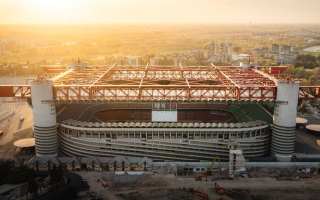
Italy: San Siro is now owned by Milan and Inter. The sale is under prosecutor investigation.
It’s official: the legendary San Siro Stadium has been sold to AC Milan and Inter Milan. The city valued the site at €197 million, and the notarial deed transferring ownership of the stadium and surrounding areas was signed on 5 November 2025. The sale ends nearly 90 years of municipal ownership of the iconic venue.
-
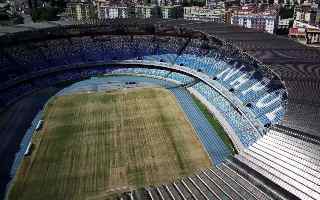
Italy: Could Stadio Maradona be sold to SSC Napoli? The mayor has a plan
In Naples, the debate over the future of Stadio Diego Armando Maradona has reignited. Following Milan’s decision to sell San Siro, mayor Gaetano Manfredi announced that the city is open to a similar approach and ready to work with a private investor — provided a credible proposal is presented.
-
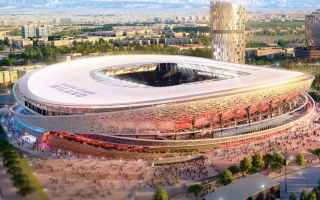
Italy: Renowned architects set to design new San Siro
On Monday, 13 October, Milan Mayor Beppe Sala met with delegations from AC Milan and Inter, including representatives of club owners Oaktree and RedBird, as well as the lead architects for the new stadium project: Norman Foster and David Manica.
-
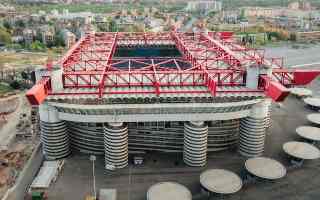
Italy: San Siro sold to Inter and Milan!
During the night of September 29–30, the Milan City Council made a historic decision. After hours of heated debate, it approved the sale of the San Siro stadium and the surrounding land to Inter and AC Milan.
-
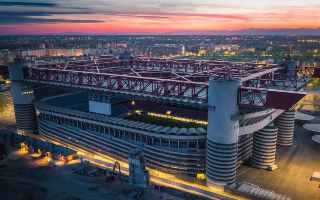
Italy: AC Milan and Inter choose elite architects for their new San Siro project
AC Milan and Inter have announced the signing of an agreement with Foster + Partners and Manica. If the Milan City Council approves the sale of San Siro and the surrounding land, these two studios will be responsible for designing the new stadium for both clubs.
-
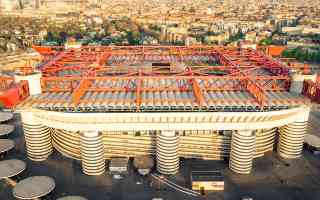
Italy: Resolution on the sale of San Siro approved
Milan’s City Council has voted through the resolution to sell the San Siro stadium and surrounding land to AC Milan and Inter. Deputy Mayor Anna Scavuzzo stressed that the decision came after extensive debate among councillors. The only dissenting voice in the executive was Elena Grandi, responsible for environment and green spaces, who stuck to her Europa Verde party line.
-
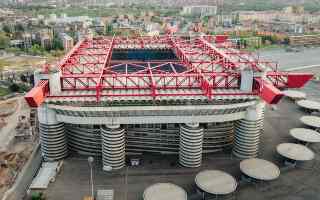
Italy: San Siro sale closer. Social and political dispute continues
Milan’s mayor Giuseppe Sala told RTL 102.5 that an agreement with the clubs has been reached and a resolution for San Siro’s sale could be presented tomorrow. He stressed the stadium must be ready by 2031 for Euro 2032.
-
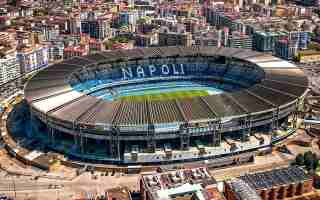
Italy: Race to host Euro 2032. Italy unprepared, several stadiums in play
Preparations for the 2032 UEFA European Championship — which Italy will co-host with Turkey — are intensifying. In a country where memories of the 1990 World Cup are still alive, a kind of “casting call” is underway to select the five Italian stadiums that will ultimately be part of the tournament. Turin is a certainty, while the venues in Florence and Rome are also ready. The battle for the remaining two spots is fierce.
-
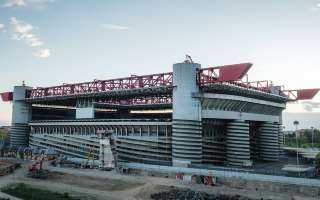
Italy: San Siro in eye of storm. City council and activists prepare for a clash
On Tuesday in Milan, two parallel scenarios unfolded regarding the future of San Siro. On one side, a meeting of the authorities about the sale of the stadium. On the other, preparations for a major demonstration.
-
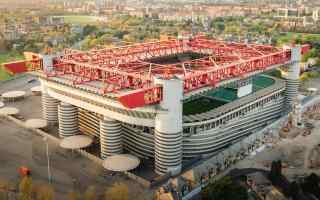
Italy: San Siro turned into a museum? Milan and Inter are running out of options
San Siro has been a symbol of Italian football for decades. Today, however, the future of the legendary stadium is becoming increasingly uncertain. On the one hand, there are cultural and legal barriers, and on the other, the ambitious plans of Milan and Inter.
-

Europe: Champions League, Europa League and Conference League finals 2025/26
Which locations for the European finals in the 2025/26 season has UEFA chosen? Hungarians, Germans, and Turks have reason to celebrate – the most important matches of these competitions will be played there.
-
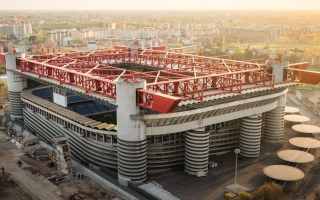
Italy: Investigation and corruption – San Siro’s future uncertain
The Milan City Council vote on the San Siro stadium project, originally scheduled for July, has been postponed until September. The decision stems from a compromise between Mayor Giuseppe Sala and the Democratic Party (PD), which requested more time due to an ongoing urban planning investigation by prosecutors.
-
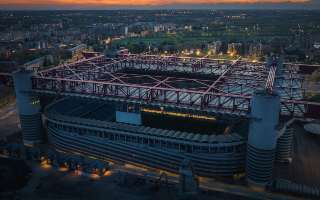
Italy: Milan accelerates decision on San Siro’s future amid rising tensions
Milan is entering a decisive phase in the dispute over the future of San Siro. Mayor Beppe Sala has proposed a timeline that would finalize the sale of the land on which the iconic stadium stands by July 31. However, the plan has sparked significant opposition.
-

Italy: Attendance at Serie A stadiums in the 2024/2025 season
Serie A is experiencing a resurgence in stadium attendance not seen in decades. In the recently concluded 2024/25 season, Italy’s top division recorded an average crowd of 30,842 spectators per match, making it one of the best-attended campaigns in the league’s history.
-
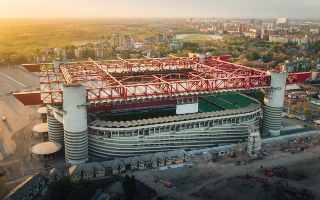
Italy: New stadium in Milan – government requirements and cautious clubs strategy
The project to build a new stadium is entering a decisive phase, but it is still far from becoming reality. Inter and Milan, who currently share the legendary Giuseppe Meazza stadium, face a number of challenges—both formal and strategic—before the new arena can come to life.
-
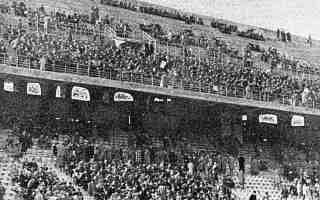
Italy: Photo from 1955 that could save San Siro
An archival photograph from 1955 challenges the official completion date of San Siro’s second ring. If the stands were already in use earlier, the stadium may already meet the legal criteria for heritage protection – potentially derailing plans for its sale and demolition.
-
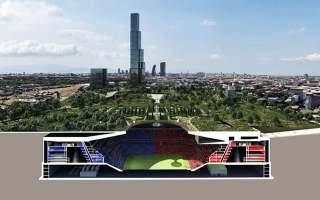
Italy: San Siro’s future – underground stadium in play?
San Siro stands at a pivotal moment in its history. Sports Minister Andrea Abodi has announced formal steps toward the privatization of the stadium and the construction of a new arena nearby. At the same time, a bold, alternative concept is being promoted by architect Davide Bruno.
-
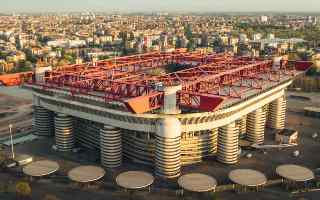
Italy: Ongoing debates over Inter and Milan's new stadium
The future of San Siro and the construction of a new stadium nearby continue to stir debate. Discussions focus on the stadium's design, its impact on Inter and Milan, and, most importantly, its effects on the surrounding area.
-

Italy: San Siro sale under scrutiny, mayor hits back
The sale of San Siro stadium to Inter and Milan has not yet been completed, but an investigation into the matter has already begun. The Prosecutor's Office in Milan, under the leadership of Marcello Violi, has initiated preliminary proceedings, without pressing any charges, concerning the transfer of the Meazza stadium and the surrounding areas from the municipality.
-
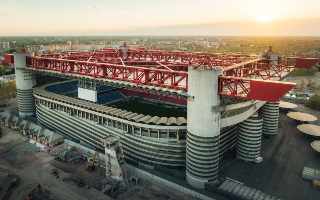
Italy: San Siro residents to file a complaint against Inter and Milan's plans
Inter and AC Milan have submitted a joint proposal to purchase San Siro and the surrounding area. If the Milan authorities accept the offer, the stadium will be sold, and the long-standing negotiations over its future will come to an end. The plan involves a partial demolition of San Siro and the construction of a new stadium next to it.
 StadiumDB
StadiumDB